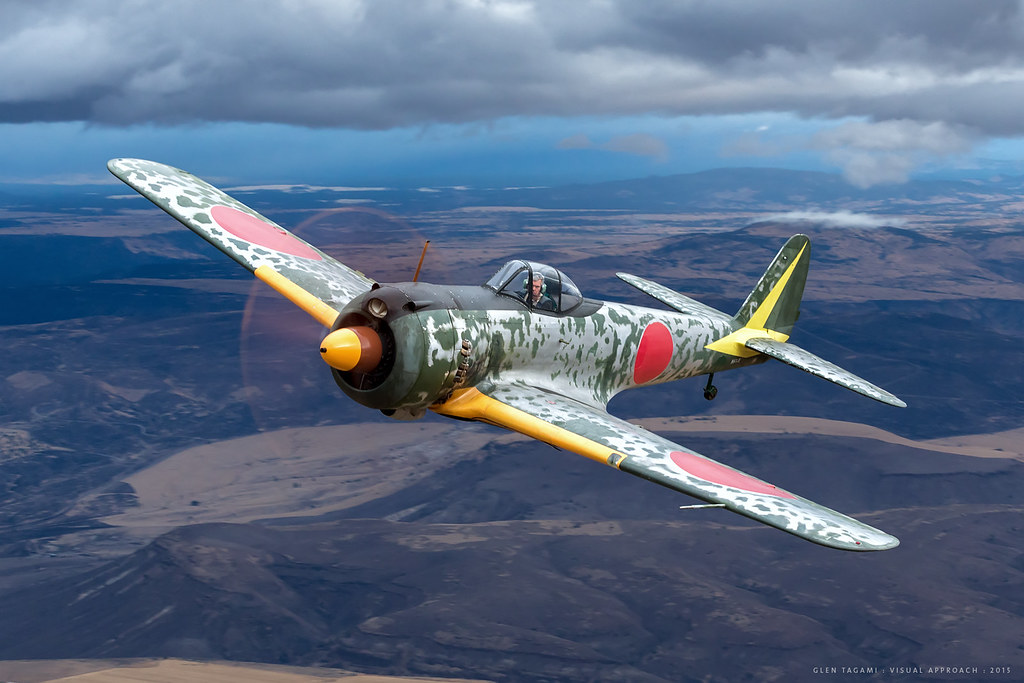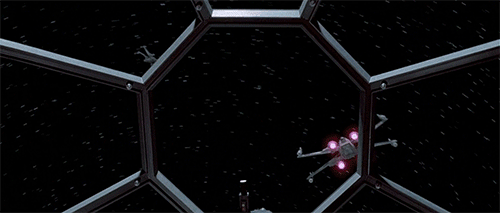By now everyone should know I might be a bit mental when it comes to World War 2 aircraft. Especially regarding my opinions.
Well, get ready for a doozy.
If I had been a pilot in WW2 for the Army, I'd have picked the Curtiss P-40 over the P-51.
(Obviously, if I'd have been Navy, I would have picked something better.)
Don't mind me, I'll show my self out to find the nearest straight jacket.
(An original Curtiss P-40B, in original colors. If I remember right, this one was at Pearl that fateful Sunday.)
Seriously, though, you can't tell me that the Hawk doesn't look good. On looks alone she beats the Mustang. Now, I'm not bashing the P-51 (I already wrote about her, and she's great). But thanks to hindsight, and knowing where I'd prefer to serve, the P-40 is better (and more readily available).
Mustangs were late to the Med, the Pacific, China, and India - all more "fun" and interesting that Europe in my opinion. Who wants to babysit thirteen guys in a truck from Seattle anyway?
(A bit of a study in anachronism. A later model Warhawk, with early US roundel. It looks like a "K" or "M" due to the longer looking tail, though it might be an "E." Probably should look up the tail number and find out officially.)
Compared to the Mustang, the P-40 was a brute. And looked ready for a fight, even without the teeth. With them... you get an iconic image no one forgets. But the legend didn't start so boldly.
(The Seversky P-35 [well, technically an AT-12 trainer] and the Curtiss P-36 Hawk in period colors.)
The Army was looking for new fighters in the mid-30s. They wanted something more European: monoplane, retractable landing gear, enclosed canopy. Curtiss and Seversky both submitted aircraft. The P-35 was more expensive and underpowered, yet the Army bought almost 80 of them. But the Army also ordered 210 Curtiss P-36 Hawks by 1937.
The P-36 (sometimes called the Mohawk), had a very low wing loading: 23.9 pounds per square foot. In comparison the Spitfire Mk.V had 27 pounds, the Bf 109G had 40 pounds, and the Dewoitine D.520 had 34 pounds. This meant the little Hawk, while still a bit underpowered, could out turn the best Europe could field in 1939. (By comparison, the P-40 had 35 pounds and the P-51 had 39 pounds.)
Michale Bay, I really hope you read this post, 'cause you got it so very wrong.
The French ordered a bunch of the new Hawks, model number 75, and rather liked them. They had range, firepower, armor, and agility. The only complaint was they were a little short on power. The Brits felt the same way. So Curtiss looked to fit a V-type engine to their plane.
Now, it may seem kinda dumb to do this, simply swap an engine to improve a plane, especially when parts of the plane are still canvas and "old school" building styles. But they did that with the Mustang. And the Wildcat. And cloth-covered control surfaces were the norm until late war.
The first attempts to fight the Allison V-1710 lead to a futuristic looking XP-37.
(Hmm... slick. Paint it black and let Batman fly it.)
Putting the radiator behind the engine, next to a turbocharger, both of which are feed by air scoops on the nose did not work very well. But work led to a successful fighter: Curtiss model number 81.
From the firewall aft the plane was identical to the P-36. This was smart, since it would allow Curtiss to get to capacity quicker. The nose was brand new and fitted with the V-1710 and the radiators in a chin scoop. Originally this was beneath the wing, but was moved forward to allow better airflow based on NACA findings (though I heard a rumor that the marketing department suggested it, whichever you want to believe).
(They just can't get the nose right.)
Curtiss started cranking them out. While the Allison didn't have the higher altitude power the Rolls Royce or the Daimler-Benz had, it was more than sufficient at low and medium altitude. And having inherited the P-36's wing loading (though a bit higher thanks to more weight) the P-40 could out turn most opponents in all theaters except the Pacific. There, her speed, firepower, and armor were of more use, since most of her opponents there had no armor, carried only two guns, and topped out between 300 and 350 mph.
The Warhawk (or Tomahawk or Kittyhawk, depending which Brit version was there) had a very high dive speed, and was considered a plane with "almost no vices" according to the top ace in the type Clive Caldwell. The P-40 was designed to be rugged. Its five-spar wing could take a beating, including mid-air collisions. She was optimal for rough field operations, such as North Africa, Russia, and the Pacific islands, places where maintenance was limited. Even transporting the plane was easy, since Curtiss made it easy (relatively speaking) to break down and put back together.
The P-40 did have a somewhat narrow landing gear, which due to being of rear-retracting design was a little flimsy. The long nose was difficult to see past on the ground, leading to a number of accidents. But, this was the best plane the US could field in any substantial number in 1941, and she was adequate to the task. The P-40 wouldn't remain that way, and was probably produced for too long without substantial improvement, but planes were needed. And a dozen P-40s on the front were better than a couple of P-51s at the factory.
The P-40s were part of America's first response to the attack on Pearl Harbor, with George Welch and Kenneth Taylor being the most notable. They were also the plane of choice for the American Volunteer Group.
(The "old man" himself - Col. Clair Lee Chennault, commander of the AVG.)
The American Volunteer Group, under leadership of Clair Chennault, was "officially" in China to train pilots to fight Japan. In reality, they took command of one hundred P-40B and P-40C fighters originally meant for the RAF. The "B" wasn't too well liked for a number of reasons, including a lack of radio, no external tank, no bomb racks. The "C" had the external tank, but was the slowest of the Hawks. Chennault didn't like the liquid cooled, non-supercharged engine. Worst of all, spare parts were not available. But the Tomahawks of the AVG were rugged, faster than the Imperial Japanese Army Air Force fighters, better armed, and had better rate of roll.
In a slow speed dogfight (low end of 200-300 mph) the P-40 could not out maneuver the Nakajima Ki-27 "Nate" or Ki-43 Hayabusa "Oscar" favored by the IJAAF in China. The same was true against the Mitsubishi A6M Reisen "Zero."
(The Nakajima Ki-43 - one of the many prey of the Flying Tigers. Technical specs here.)
But at higher speeds, the Warhawk could outmaneuver them. The problem was convincing the Japanese to play a game where they were at a disadvantage. This is what hamstrung US pilots for a few years. Americans kept trying to fight a "classic" turning dogfight a low speeds against aircraft sometimes half their weight. In fact, the rigid 3-ship formation and slow turning dogfight was standard taught.
They were playing the other guy's game.
That's why P-39s were seen as lemons. Why the P-38 was seen as too big for the job of day dogfighter. Why the F4F was seen as unable to outturn a cloud on a windless day. Why were we playing to the strengths of the other guys?
Chennault realized this, before the war even started, and his view was reinforced once he got to observe the Japanese in their attacks in China. What he taught, and what got him in some hot water with the Army a few years before, was the diving attack. British test pilot Eric Brown had this as one of his marks of a good fighter. The tactic is simple: get above the enemy, dive and shoot, speed away, repeat. Sometimes called "boom-and-zoom" tactics, this method worked in World War 1 and works even today.
"Never dogfight with a Zero."
(Or a Tie fighter, as Wedge Antilles demonstrates.)
Play to your strengths.
The P-40 would be an exceptional craft in a number of "lower profile" theaters, such as the Mediterranean. There the Warhawk would do battle against Bf 109s and various Italian craft, such as the Fiat CR.42 and the Macchi MC.202. Against these she was a fox in a chicken coop. The rugged design lent itself to the forward operations of the Desert Air Force. Sometimes I wonder what would have happened if the British had sent P-40s to Malta instead of Hurricanes or Spitfires. (Maybe I'll write that story someday.)
Throughout the Pacific, the P-40 did yeoman's work, especially in the China-Burma-India theater. Again, the rough conditions (jungles, swamps, lots of heat and humidity) didn't overwhelm the P-40. Operating from cut-jungle strips and coral runways were no big deal.
The P-40 (or at least her reputation) ended up being on the chopping block of Congress after the war. Truman's investigation rightfully questioned Curtiss's practices during the war, and for reasons like that, people started viewing the P-40 as less than stellar. After all, who thinks recycling a ten year old design is a good idea. (Remember, the P-36 was two years old when WW2 broke out.) Her abilities compared with late war craft was less than stellar, but that's like comparing a present day Ford Mustang with one from the 1970s. The new one should be much better. So, yes, things like the P-51, the F4U, and others were superior. But we needed planes, and a decent plane is better than no plane.
The air war in 1939 or 1940 was nothing like what it was in 1944 and 1945. Of course, the P-40 would not have survived the legendary attack on Y-29, nor would it have been able to escort B-29s over Japan. But her inability to serve in the more vicious environment later in the war should not detract from her success earlier.
That would be like comparing the F-4 Phantom to the F-22 Raptor and saying the former must have always been a "lemon" and how could they fly those things in Vietnam? In the 1960s, the Phantom was cutting edge. Today, she's been passed by thanks to better designs. As it should be. The Mustang wasn't king of the sky forever. Not even five years after the war, the P-51 had to bow out and let the F-86 take the throne. That's how progress works.
Yet some of us still think fondly back to simpler times, when you didn't need all the fancy bells and whistles. When grit and guts meant more than graphs and algorithms. A time when tenacity beat technology.
That's what the P-40 represents for me, and why she's my first choice for USAAF if I'd been there.
Granted, the Lockheed P-38 Lightning is a very close second. Next time.



.jpg)





No comments:
Post a Comment